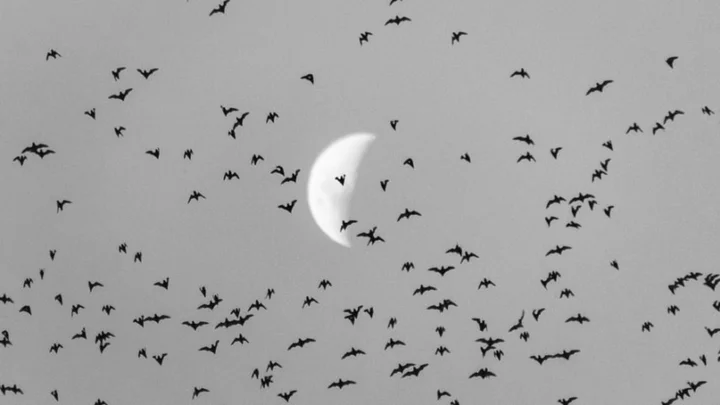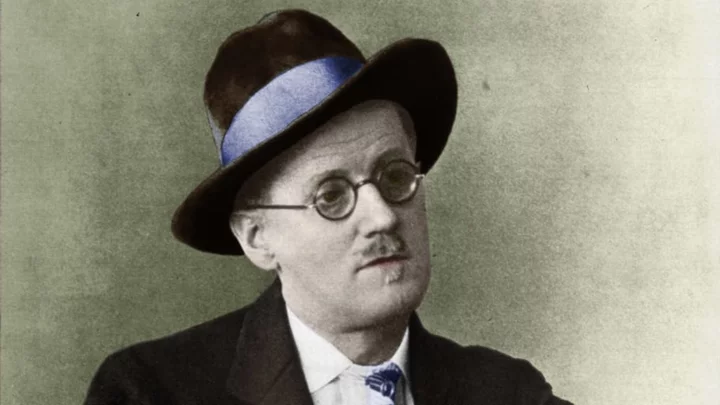Louis Wain was an artist with a nearly singular focus: cats. He sketched, painted, and even animated these furry companions throughout the late 19th- and early 20th-centuries, at a time when cats were considered nothing more than a way to keep rodents at bay. His work was incredibly popular in his native England and abroad for decades, enduring even after he was committed to an asylum in 1924. Here’s what you need to know about the artist whose influence can be seen everywhere from Felix the Cat to the mountain of cat memes on the internet.
1. Louis Wain didn’t always draw just cats ...
Wain, who was born in 1860, was oldest of six children and sole son. His father, a textile trader, died when was Wain was 20, leaving him to support his mother and sisters. He worked as an art teacher and then became an artist for newspapers and periodicals, where he drew both animals and country scenes, which often featured dogs. The first cat drawing he sold—titled Our Cats: A Domestic History—was published in The Illustrated London News in 1884. Two years later, he illustrated a children’s book called Madame Tabby’s Establishment.
2. ... But he did draw hundreds of thousands of cats.
Some place the tally at 150,000, but others (notably The Evening Standard in 1933) estimate he illustrated more than a quarter of a million kitties. His subjects included rainbow-colored cats, anthropomorphic cats, and even royal cats—Princess Victoria of Schleswig-Holstein’s chinchilla kitten graced the cover of one of Wain’s many books of illustration in 1911.
3. Wain also kept up to 17 cats as pets.
Unsurprisingly, Wain cared for several cats himself. The Evening Standard reported in 1925 that the artist “at one time kept a small ‘family’ of 17 cats who were always posing as models.” His most beloved cat, however, was the first one, a black and white kitten named Peter.
Peter came into Wain’s life shortly after his wedding to Emily Richardson, his sisters’ governess. In a tragic turn of events, she was soon stricken with breast cancer and died in 1887, just a few years into their marriage. During her illness, Peter became a constant companion, “lying on the sick bed, just as he always was, his paws and body resting on [Emily’s] arm,” Wain later told The Manchester Weekly Times. He began sketching their devoted pet, and eventually sold drawings of Peter to British periodicals.
Peter, who died in 1898, did much more than comfort Emily and inspire Wain. “It is not, I think, too far-fetched to speculate that Louis Wain’s having met Peter changed the course of domestic history,” biographer Peter Dale wrote in his book Louis Wain: The Man Who Drew Cats. “Certainly, the attitude of the general public towards cats, and their feeling (or otherwise) for cats was greatly affected by Louis Wain’s work. … Had Peter not found comfort on Emily’s sick-bed, he would not have made such a ready model for Louis Wain. And had he not received so much attention, he might well have not developed such a personality.”
4. He created an animated cat before Walt Disney.
Before Walt Disney debuted any of his classic cartoon characters, Wain developed “Pussyfoot,” which some consider the first animated cat. According to Cat Compendium: The Worlds of Louis Wain, the first Pussyfoot movie screened in London in the spring of 1917, beating even Felix the Cat to theaters—but it didn’t connect with audiences. Filmmaker George Pearson, who collaborated with Wain, claimed that “three or four cartoons were completed, but their cinema success was not great.” The British Film Institute credits Wain as the animator on two shorts: The Golfing Cat and The Hunter and the Dog, both from 1917.
5. Wain thought the animals were electric.
As the world’s foremost cat illustrator and president of the National Cat Club, Wain spent hours talking and thinking about his preferred pet. He came to develop a number of theories on them, some the kind of speculative social observations you still hear today—he argued in Cassell’s Magazine, for instance, that cats take after their owner’s personality. But other theories were a bit stranger. Wain seemed to think that cats held an electric charge, writing that he “looked upon a cat as a lightning conductor on a small scale, and that according to its temperament, negative or positive, did it face north or south, or just as the points of its fur were attracted by the negative or positive poles of the earth.”
6. He may have had schizophrenia.
Following a bus accident and a series of personal misfortunes and tragedies, Wain began exhibiting increasingly erratic and even violent behavior. With his wife long gone, Wain was by then under the care of his sisters, who didn’t know how to help him. He was declared insane in 1924, and committed to the pauper’s ward at Springfield Mental Hospital.
In the decades since Wain’s death, many scholars have diagnosed him with schizophrenia, though this is a topic of considerable debate. Child psychiatrist Michael Fitzgerald has argued that Wain was actually autistic, pointing out that his skill as an artist did not depreciate over time and that Asperger’s syndrome is “commonly confused” with schizophrenia.
7. Some believe the onset of Wain’s psychosis can be seen in his art.
Those who do believe that Wain was schizophrenic often point to his work as evidence of his worsening mental state. “Looking into the cats’ eyes, they become more manic from 1914 onwards,” art dealer Harry Boxer told Artsy. Wain’s later work is usually characterized as frenetic, even sinister, though it can be difficult to place his art in chronological order, since he didn’t date his unpublished illustrations. Several Wain pieces have appeared in psychology textbooks to illustrate the onset of schizophrenia.
8. H.G. Wells tried to raise money for Wain’s care.
Wain was a prolific illustrator, and his cats ended up on everything from food tins to postcards. There were so many of his illustrations out there, in fact, that eventually no one was interested in commissioning any more. “He was never that good in business,” Colin Gale, director of the Bethlem Museum of the Mind, told the BBC. “He didn't enforce copyright for instance, so he ended up quite poor, which is why he ended up in Springfield Hospital.”
Once news of Wain’s commitment became public knowledge, a group of concerned friends and fans formed a fund for his care. Legendary sci-fi writer H.G. Wells lent his name to the cause, composing a fundraising message that was broadcast over the radio in 1925. “The uncertainties of fortune were never better illustrated than in the case of Louis Wane [sic], the well-known cat artist whose delightful tabbies illustrated every magazine for many years,” the message, reprinted in The Guardian, read. “Three generations have been brought up on Louis Wane’s [sic] cats. The artist has fallen on evil days. ... You are asked to do your utmost to help by communicating with the hon. organiser of this fund.” According to Britain’s National Archives, the donations were generous enough to move Wain to nicer accommodations at Bethlem Royal Hospital, and later, Napsbury Hospital.
9. Wain continued drawing from an asylum.
Wain spent his final 15 years in various mental wards, where he gradually faded from the public eye, but he never stopped drawing. His work was still exhibited in London in the 1930s, and when he died in 1939, he left behind several more pieces of colorful, even kaleidoscopic art, including a series of holiday-themed cats painted directly onto mirrors for Bethlem Royal Hospital’s Christmas celebrations.
10. He was the subject of a biopic.
The Electrical Life of Louis Wain, released in 2021, starred Benedict Cumberbatch as Wain. The movie examined his art, peculiarities, and family life. Wain was able to paint with both hands, which Cumberbatch learned how to do for the movie, and the production used 40 real cats with no CGI manipulation of their actions. “One of the ways of Pavlovianly triggering them is just have this clicker, which is tied in with the food reward, so I’d go home in the car and I’d just be still hearing this clicking,” Cumberbatch told Variety. “We talked about getting a clicker for me.”
This article was originally published on www.mentalfloss.com as 10 Facts About Louis Wain, the Cat-Obsessed Victorian Artist.









